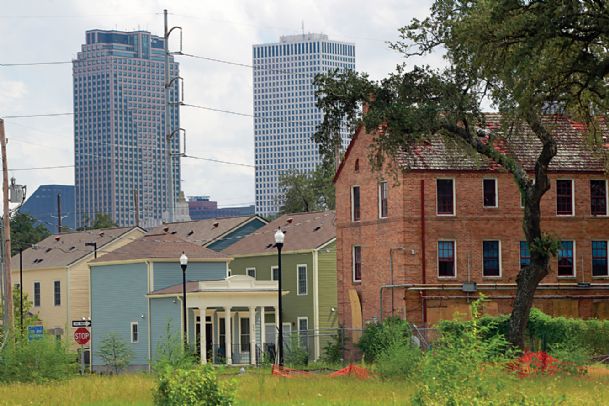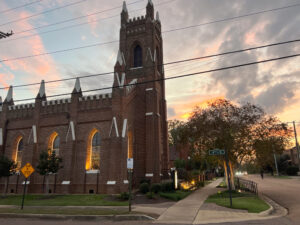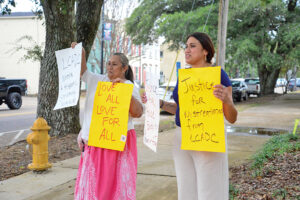NEW ORLEANS — With Isaac bearing down on New Orleans, the city finds itself at a delicate moment in its rebuilding since Hurricane Katrina struck seven years ago.
Private and government investment is fueling the push to overhaul some of the city’s troubled but culturally rich neighborhoods near the French Quarter, where poor families are being replaced as wealthier ones move in. Few would argue that the city’s in a boom — and even gentrifying. But some question whether it will wither the roots that grew the city’s distinctive identity.
“New Orleans is becoming a boutique city like San Francisco,” said Gary Clark, a politics professor at Dillard University. “You may see black middle class moving in, but with gentrification there’s overwhelmingly white individuals of means who become the new urban pioneers.”
The number of whites, although smaller than before Katrina, has grown as an overall percentage from 28 percent to 33 percent of the city’s population. The city has its first white mayor since the 1970s, while the City Council now has a majority of white members.
On the flip side, blacks say there’s danger that their community will be diminished in a city that owes deep cultural and economic debts to its Afro-Caribbean roots. Since the storm the African-American community has shrunk by about 118,500 people, dropping from about 68 percent of the population to about 60 percent.
“(Blacks) don’t see themselves as being a part of the recovery economy and getting real opportunity,” said Nolan V. Rollins, the Urban League of Greater New Orleans president.
It’s not clear what effect Isaac could have on the city. Early Tuesday morning, Isaac was still a tropical storm packing top sustained winds of 70 mph in the open Gulf. Forecasters said they expected it would become a hurricane over the warm Gulf Waters and come ashore near New Orleans by early Wednesday, the seventh anniversary of Katrina’s devastating strike on the city.
This winter the U.S. Department of Housing and Urban Development plans to demolish the last of the New Deal-era public housing still standing in New Orleans — the 850-unit Iberville complex. It was erected over the slums of what was for a time the nation’s only legal red-light district, Storyville.
The demolition is part of a $31 million HUD “choice neighborhoods” project, a concept pushed by the Obama administration across the nation. HUD hopes that by starting the process of gentrification, private investment will follow and the communities will become desirable places for all races and classes to live in.
Linda Couch, a public housing expert at the National Low-Income Housing Coalition, said the new approach “has the elements of success.”
Meanwhile, another $4 billion in private and government investment has been pouring into the historic neighborhoods of Iberville and Treme, the hearth of the city’s African-American culture.
The 1.4 square miles where much of the redevelopment is occurring has long been known for gumbo, jazz, voodoo and civil rights pioneers. Immigrants from around the world lived side by side with blacks in Treme and Iberville, where Louis Armstrong once walked the streets and delivered coal as a boy.
But the entire area fell on hard times after the 1960s, as whites moved to the suburbs and bad urban planning took its toll. By the time Katrina hit, it was struggling and looked like an urban desert of blight, drugs and abandonment in many areas.
The plan for redeveloping the area could include the removal of a noisy concrete interstate expressway that runs through Treme with the hope of restoring what was one of the city’s main streets for black commerce. Work is already underway to turn an unused rail corridor into a miles-long walking and bike path called the Lafitte Greenway, turning old schools into new charters and opening “fresh-food” supermarkets.
Taking down the Iberville housing complex is crucial, planners say, to connect Treme with the downtown’s theater and business district on Canal Street.
“I think we can retain the soul of New Orleans and in fact enhance it by going through this process,” said David Gilmore, a HUD housing expert leading the planning effort.
Many residents see a chance to save neighborhoods that have fallen prey to drugs, poverty and blight.
“We’re happy if someone moves down the street into a blighted property,” said Jennifer Jones, the self-styled “queen of the second-line” and member of a Treme family of musicians. “No one’s angry about whites moving in. When we grew up, there was a lot of mixing going on,” Jones said.
But others are apprehensive.
“Maybe they’ve got their reason,” said Lionel Glenn, a 69-year-old retired laborer who ended up at Iberville after another project he was in was torn down after Katrina. “I’d like to stay, but I’ve got to move.”
A recent article in a black community newspaper, The New Orleans Tribune, blared: “They’re here” in referring to whites looking to buy up inner-city property. The headline read: “Gentrification: The New Segregation.”
Unlike the other redevelopments after Katrina, HUD promises to find housing for all the 440 families at Iberville within about 1 mile of the project.
After Katrina, most of the city’s projects were torn down quickly and families were dispersed across the nation. Advocates charged that policy forced poor families out of New Orleans. Public housing units were cut in half at those complexes.
“What has happened is exactly what many people predicted would happen,” said Lance Hill, who runs the Southern Institute for Education and Research, a race relations center at Tulane University. “Blacks have ended up in apartments ringing the city.”
Mayor Mitch Landrieu says there is no reason to fear the redevelopment.
“We’re building it back better than it ever was before and the way it always should have been.”
You can help your community
Quality, in-depth journalism is essential to a healthy community. The Dispatch brings you the most complete reporting and insightful commentary in the Golden Triangle, but we need your help to continue our efforts. In the past week, our reporters have posted 46 articles to cdispatch.com. Please consider subscribing to our website for only $2.30 per week to help support local journalism and our community.







